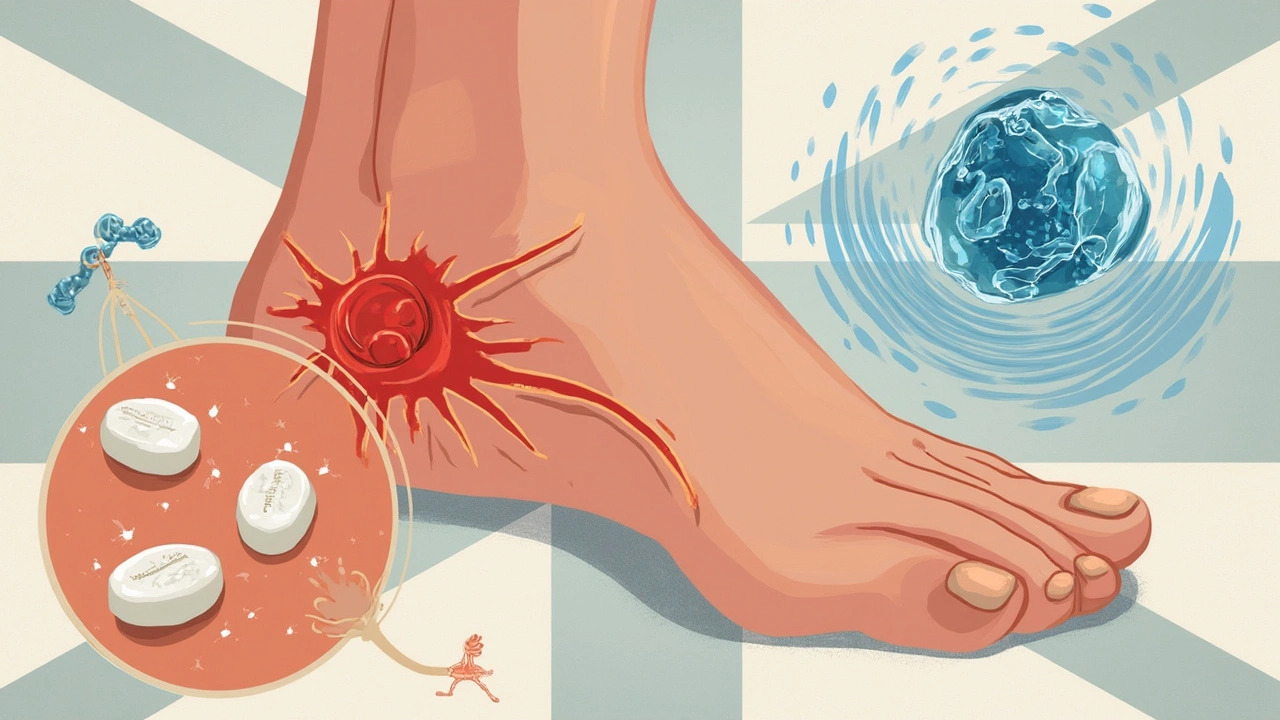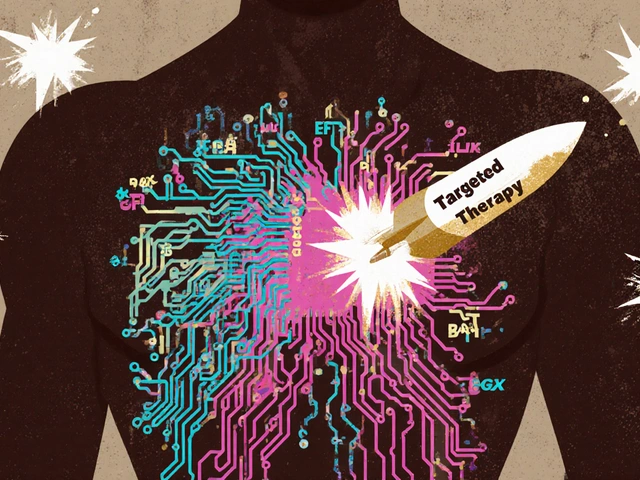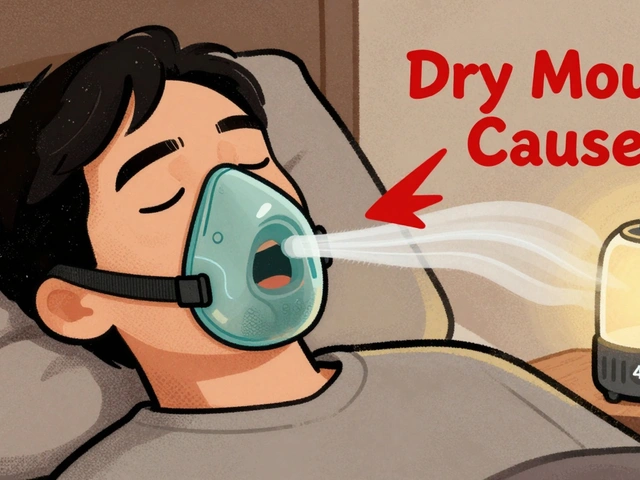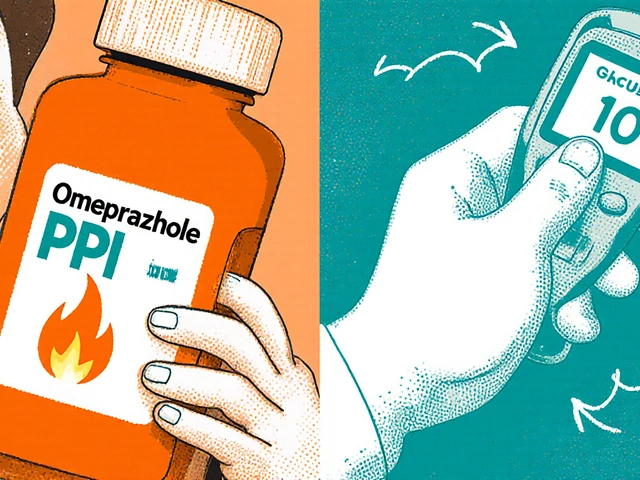Diclofenac Sodium for Gout: Can It Actually Help with Pain and Swelling?
If you’ve ever felt that stabbing, fiery pain in your toe or ankle, you know gout isn’t something to brush off. The urge to find instant relief is real. Diclofenac sodium comes up a lot when folks are searching for something strong enough to take the edge off.
Diclofenac is part of the NSAID family—the same gang as ibuprofen and naproxen—but it’s often seen as a little more potent for joint pain. When your gout flares up, your joints aren’t just sore—they’re swollen, angry, and sometimes so tender you can’t even handle a bedsheet touching your skin. That’s where diclofenac’s anti-inflammatory punch comes in.
Wondering if it works fast? People sometimes get decent relief within an hour or two, but it’s not magic. You need to take it exactly as prescribed, and it works best when you catch the flare early. Also, don’t expect it to fix the root of your gout—it treats the pain and swelling, not the uric acid problem beneath it all.
- What Is Diclofenac Sodium and How Does It Work?
- How Gout Attacks Hit Hard
- Diclofenac Sodium’s Role in Managing Gout Flares
- How to Take Diclofenac Safely
- Side Effects and What to Watch Out For
- Tips for Managing Gout Beyond Medication
What Is Diclofenac Sodium and How Does It Work?
Diclofenac sodium is a medicine from the NSAID family, which stands for nonsteroidal anti-inflammatory drugs. These meds are known for cutting down pain and swelling—exactly what you want when your joints feel like they're on fire from gout.
This drug works by blocking certain chemicals in your body that trigger inflammation. When you get a gout attack, there’s a flood of these chemicals (prostaglandins). Diclofenac stops an enzyme called COX (cyclooxygenase) from making them. With less of those pain-makers floating around, your joint pain and redness start to calm down.
There are a few ways you might take diclofenac for gout: tablets, capsules, or even as a topical gel that goes right onto the skin. Most people who get it for gout use the pill form. It doesn’t cure gout, but it’s pretty good at dampening the pain and making it easier to move when a flare catches you off guard.
Compared to over-the-counter options like ibuprofen, diclofenac sodium is usually stronger per dose. That’s why doctors sometimes pick it when pain is severe—like in a bad gout flare. Just a heads up: It should always be taken exactly as your doc or pharmacist says, since too much can mess with your stomach or cause other problems.
| NSAID | Typical Strength per Dose |
|---|---|
| Ibuprofen | 200-400mg |
| Naproxen | 220-500mg |
| Diclofenac Sodium | 25-50mg |
The takeaway? When it comes to calming the pain and swelling of gout attacks, diclofenac sodium packs a punch, but you need to use it wisely and only for treating symptoms, not for everyday prevention.
How Gout Attacks Hit Hard
There’s nothing subtle about a gout flare. Most people find out they have it after waking up at night with a joint—usually the big toe—feeling like it’s on fire. Within hours, that toe gets hot, swollen, and red, and just moving it can make you want to scream.
So what’s actually happening? Gout is triggered when uric acid builds up in your blood and forms sharp crystals inside your joints. These crystals trigger a huge immune response—not unlike what happens if you get a splinter, but this time, it’s deep in your joint. Your body sends white blood cells and inflammation chemicals, and bam—massive pain and swelling.
Gout doesn’t just target your big toe, either. It can hit your ankles, knees, elbows, and even your fingers. According to recent research, about half of first gout attacks involve the big toe joint (known as the first metatarsophalangeal joint), but other joints often join the party as gout progresses.
What makes it worse? Eating a ton of red meat, seafood, or drinking too much alcohol can raise uric acid. So can dehydration, some blood pressure meds, sudden weight loss, or even just bingeing on sugary drinks.
- Gout pain tends to get worse over the first 12–24 hours of a flare.
- Untreated attacks can hang around for a week or two—sometimes even longer.
- It’s more common in men and folks with family members who have gout.
So if you’re dealing with gout, it’s not just bad luck—it’s a classic immune system overreaction mixed with lifestyle and genetic factors. Spotting a flare early matters, especially if you want meds like diclofenac sodium to work effectively and get you back on your feet faster.
| Common Gout Triggers | Impact on Uric Acid |
|---|---|
| Red Meat | Increases |
| Seafood | Increases |
| Alcohol (especially beer) | Increases |
| Sugary drinks | Increases |
| Dehydration | Increases |
Diclofenac Sodium’s Role in Managing Gout Flares
When a gout attack hits, the key goal is to shut down pain and swelling as soon as possible. That’s where diclofenac sodium comes in. As an NSAID, it blocks chemicals in your body called prostaglandins—the stuff that ramps up inflammation when your immune system detects uric acid crystals in your joint. No prostaglandins, less swelling and pain. Simple as that.
Doctors often go with diclofenac for gout because it packs a stronger punch than over-the-counter choices like ibuprofen. There’s even a 2022 review that found prescription-strength NSAIDs—including diclofenac—knock down pain and joint tenderness within two to three days for most folks having a gout flare.
Here’s what makes diclofenac a go-to option during a gout attack:
- Fast action: Tablets or gels can ease pain within hours if you take them at the start of symptoms.
- Flexibility: It comes as pills, topical gels, or even patches—so if your gut hates pills, gel might be an option.
- Reduces the need for steroids: Controlling pain quickly means you might avoid meds like prednisone, which can have more side effects.
Diclofenac doesn’t lower your uric acid—it just helps you survive the worst part of a flare. Reckon it as a tool for “crisis mode” but not an everyday solution. If you keep having attacks, your doctor will want to work on a long-term plan.
Below is a quick snapshot of how diclofenac sodium matches up with other treatments during acute gout:
| Treatment | Onset of Relief | Main Use |
|---|---|---|
| Diclofenac Sodium | 1-3 hours | Pain & inflammation during flare |
| Colchicine | 6-24 hours | Pain & swelling; often if NSAIDs can't be used |
| Corticosteroids | 12-24 hours | For people who can't take NSAIDs or colchicine |
So, for managing a gout attack’s pain and swelling, diclofenac sodium hits quick and hard. Just pair it with advice from your doctor, so you get the benefits without the risks piling up.

How to Take Diclofenac Safely
Getting the best out of diclofenac sodium starts with using it the right way. This is not a “take whenever you feel like it” kind of medication. Doctors usually hand out diclofenac in either pill or gel form, depending on how bad your gout flare is and which joint is screaming for help. Most people with gout get prescribed the tablet form because it works from the inside out.
The most common dosage for gout pain is 50mg taken two or three times per day. Never go over what your doctor tells you. Taking more does not equal faster relief, just more side effects. Always swallow tablets whole with a full glass of water and try to eat something before—this helps protect your stomach.
- Stick to the timing: Space out your doses as recommended, usually every 8-12 hours. Setting an alarm can help you remember.
- No mixing with similar meds: Skip other NSAIDs like ibuprofen or naproxen while on diclofenac since stacking these can mess with your stomach and kidneys.
- Watch out for other meds: If you’re taking blood thinners, heart meds, or water pills, check with your doc—diclofenac sodium doesn’t play nice with all drugs.
| Form | Typical Dose | How Often |
|---|---|---|
| Tablet | 50mg | 2-3 times per day |
| Gel | Topical (as directed) | Up to 4 times per day |
Avoid alcohol as much as you can while taking this drug. Both alcohol and diclofenac sodium can bother your gut and increase bleeding risk. If you miss a dose, skip it—don’t double up the next time.
Be honest with your doctor about any history of stomach ulcers, high blood pressure, or kidney issues before starting. Some people need extra blood tests while on diclofenac because it can nudge up liver enzymes or affect kidney function. If stomach pain, black poop, or weird bruising shows up, call your doc right away.
Side Effects and What to Watch Out For
Diclofenac sodium isn’t a “set it and forget it” fix for gout. Like any NSAID, it can bring on side effects, and ignoring them just isn’t worth it. The most common trouble spots? Stomach problems. You might feel heartburn, nausea, or even stomach pain. Some people wind up with ulcers or bleeding, especially if they use diclofenac sodium a lot or mix it with alcohol.
If you have a history of high blood pressure, keep an eye on things—this drug can send your numbers higher. It can also mess with your kidneys if you already have problems or are taking other meds that stress your kidneys. Rare, but something to note: diclofenac can up your risk for heart attacks or strokes. It’s not a daily go-to for anyone with current heart disease.
Signs to call your doctor right away include:
- Black, tarry stools or blood in your vomit (could signal bleeding in your stomach)
- Serious stomach pain that won’t quit
- New swelling in your feet or lower legs
- Sudden chest pain or trouble breathing
- Unusual fatigue or weakness
Allergic reactions aren’t common, but they do happen. Watch for rash, itching, trouble swallowing, or swelling—especially around your face or throat.
It’s smart to look at how often you’re taking diclofenac sodium and how it fits with the rest of your meds. If you’re mixing in blood thinners or other NSAIDs, talk to your doctor first—that combo can raise your risk of bleeding or kidney issues quickly. As for older adults, side effects can hit harder and show up sooner, so don’t push your luck with higher doses.
What do the stats say? Researchers figure stomach ulcers happen in up to 15 out of every 100 heavy NSAID users per year. Even a couple days of back-to-back use can make your gut unhappy.
| Common Side Effect | Frequency |
|---|---|
| Stomach pain/irritation | Up to 20% |
| Headache or dizziness | About 10% |
| Swelling in legs/feet | 5-8% |
| Rash or allergic reaction | Under 1% |
If something feels off while you're on diclofenac sodium for your gout flare, it’s better to pause and check in with your healthcare provider before it gets worse. Safety first, pain relief second.
Tips for Managing Gout Beyond Medication
Popping a diclofenac sodium when gout hits is just part of the plan. If you want fewer flares and less pain over the long haul, you have to tackle gout from more than one angle. Here’s what actually helps, according to real research—not just old wives’ tales.
- Hydration is key. Uric acid likes to hang out in your body if you’re running low on water. Aim for at least 8-10 glasses a day. It helps flush extra uric acid—no magic, just chemistry.
- Watch your diet. Red meats, shellfish, and beer are famous for triggering attacks. Doctors say cutting back can seriously lower your risk. Try swapping in lean poultry, tofu, or plant proteins where you can.
- Go easy on the booze. Especially beer and spirits. Alcohol messes with how your body gets rid of uric acid. If you do drink, stick to a small amount of wine and have it with food.
- Keep your weight in check. Carrying extra pounds means higher odds for gout. Even losing just 5-10% of your body weight has been shown in studies to drop uric acid levels.
- Exercise gently but regularly. Don’t go hard when a flare hits, but regular movement between flares keeps joints healthy and your weight down. Start with walking or swimming—no need to marathon train.
- Know your meds. Some common meds—like diuretics for blood pressure—can make gout worse. If you’re on lots of prescriptions, ask your doctor if they’re gout-friendly.
Quick look at what works for most people who manage their gout with lifestyle tweaks:
| Tip | Why it Matters |
|---|---|
| Hydrate | Lowers uric acid in blood |
| Limit purines (red meat, seafood) | Reduces flare triggers |
| Lose weight | Takes pressure off joints, lowers risk |
| Exercise | Boosts joint health and overall wellness |
Takeaway? Diclofenac sodium helps with pain, but your daily choices are what keep gout from coming back swinging. These small changes pile up, and over time, they really make a difference in how often you see those flare-ups.






12 Comments
Selina M
April 24 2025Diclofenac can rilly help swing that gout pain fast
Sarah Fleming
April 30 2025What they dont tell you is that big pharma pushes diclofenac like a secret weapon, masking the true risks behind glossy ads. It's a silent accomplice in a larger scheme to keep us dependent on pills rather than real healing.
tatiana anadrade paguay
May 5 2025For anyone battling a gout flare, start diclofenac as soon as you notice the first throbbing. Take the prescribed dose with food to protect your stomach, and stay hydrated. Pair it with a low‑purine diet and regular gentle movement, and you’ll see the swelling recede faster. Remember, medication eases the attack, but lifestyle tweaks prevent future ones.
Shirley Slaughter
May 11 2025Imagine the joint as a battlefield where diclofenac is the cavalry charging in, slicing through the fiery inflammation. Yet even the bravest troops need a strategic plan: a balanced diet, proper hydration, and steady exercise. When you combine them, the war against gout becomes winnable.
Sean Thomas
May 17 2025Our government agencies collude with drug conglomerates to keep Americans chained to NSAIDs. Diclofenac is just another leash, sold as a miracle while they profit from our pain. Reject the narrative and demand real answers.
Aimee White
May 23 2025Oh, the shadows they weave! Diclofenac glimmers like a silver bullet, but beneath its shine lies a vortex of hidden side‑effects. Only the daring souls dare to peer into its abyss and survive.
Javier Muniz
May 29 2025Hey folks, quick tip: if you’re on diclofenac for a gout flare, set an alarm so you don’t miss a dose. Skipping can leave the pain hanging around longer. And always eat something before you pop the pill – your stomach will thank you.
Joey Yap
June 3 2025In the grand scheme, pain is a messenger, not an enemy. Diclofenac merely silences its voice temporarily, allowing us to reflect on the habits that summon the flare. Use the calm to contemplate lasting change.
Lisa Franceschi
June 9 2025It is imperative to adhere strictly to the prescribed dosage of diclofenac sodium, particularly in the context of acute gout management. Deviation from the regimen may result in suboptimal therapeutic outcomes and heightened adverse effects.
Diane Larson
June 15 2025Here’s a concise checklist for safe diclofenac use: 1) Take the tablet with a full glass of water and food. 2) Space doses 8‑12 hours apart, never double‑dose if you miss one. 3) Avoid alcohol and other NSAIDs to protect your stomach lining. 4) Monitor blood pressure and renal function if you have pre‑existing conditions. 5) Contact your clinician promptly if you notice black stools, severe stomach pain, or swelling in your legs.
Brian Klepacki
June 21 2025The moment diclofenac sodium enters the bloodstream, it performs a theatrical overture upon the inflamed citadel of your gout‑ridden joint. Each molecule, a disciplined actor, silences the prostaglandin chorus that once sang the anthem of agony. Yet, the audience-your body-remains oblivious to the deeper narrative of uric acid accumulation. This pharmaceutical prodigy, while laudably swift, is but a fleeting intermission in the saga of chronic disease. One must not mistake the applause for a standing ovation; the curtain will fall and the underlying pathology will persist. Scholars have chronicled its efficacy within hours, yet the true art lies in the orchestration of complementary lifestyle measures. Hydration, a subtle yet potent libation, dilutes the villainous crystals that precipitate the flare. Dietary restraint, the disciplined monk, abstains from the sacrificial red meats and intoxicating ales that fuel the inferno. Exercise, the diligent scribe, records the body's resilience without aggravating the inflamed stage. Moreover, the physician, the director, must choreograph dosage, timing, and monitoring with surgical precision. Ignoring the script-by overindulging in alcohol or combining NSAIDs-invites a tragic denouement of ulcers and renal distress. In this grand theater, diclofenac is the lead, but the ensemble cast of patient adherence, lifestyle reform, and medical oversight determines the ultimate triumph. Let not the spotlight blind you to the shadows of side‑effects that linger beyond the applause. Keep vigilant, record your symptoms, and consult the maestro of your health before the final bow. Only then will the performance conclude with a chorus of lasting relief, not a fleeting encore of pain.
Shermaine Davis
June 26 2025Make sure u dont take more than the doc says or u could hurt ur stomach